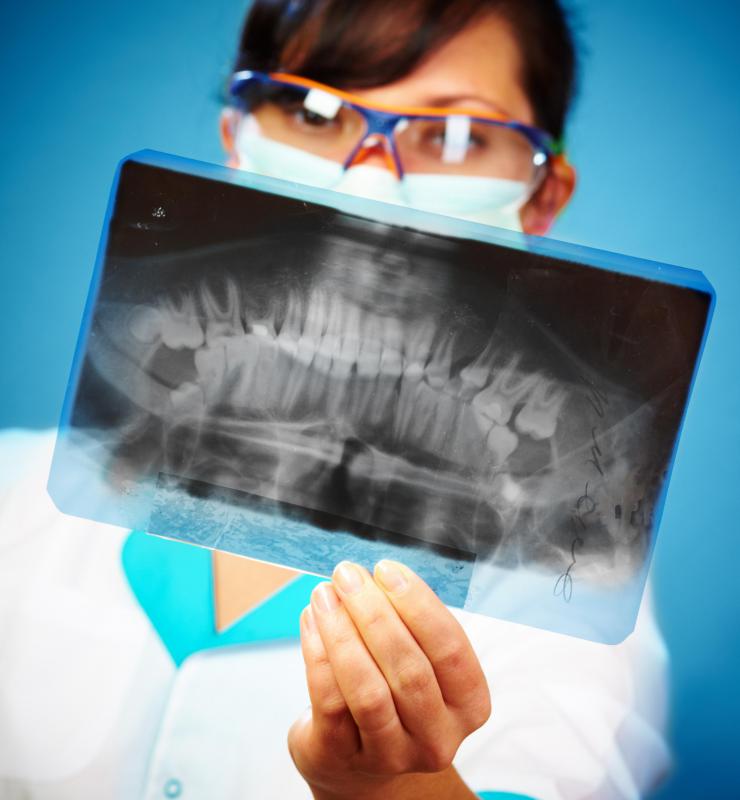At WiseGEEK, we're committed to delivering accurate, trustworthy information. Our expert-authored content is rigorously fact-checked and sourced from credible authorities. Discover how we uphold the highest standards in providing you with reliable knowledge.
What Is a Flossing Toothbrush?
A flossing toothbrush is a toothbrush with special bristles designed to help floss teeth. Its bristles are crafted to be slimmer and longer than a standard toothbrush's so that they can reach in between teeth and under gums. While flossing toothbrushes have reputations for helping to floss teeth, they shouldn't be used as a replacement for regular floss.
Flossing toothbrushes are designed to get to those hard-to-reach places where plaque and bacteria reside. Debris like this has been known to hide under the gum line, in a sulcus, which can be difficult to address for even the most experienced flosser. The bristles can easily touch these areas and make it so that they can be cleaned with little discomfort or fuss on the part of the flosser. Using a flossing toothbrush may also remove invisible bacterial films that stick to teeth and contribute to dental diseases.

These types of toothbrushes generally look like standard toothbrushes, but the bristles, however, can differ in important ways. The bristles of flossing toothbrushes can be longer and thinner than their standard toothbrush counterparts. In addition, their ends can be rounded and polished so as to not harm users' gums while cleaning. Some may feature bristles that are double-tiered for more effective flossing action.

Brushing with a flossing toothbrush is not intended to replace the action of flossing teeth with traditional floss. Rather, they act as tools that enhance the effects of standard flossing. Individuals who use flossing toothbrushes should be prepared to continue using regular floss on a daily basis.
Regularly flossing and using dental tools that enhance flossing activities, like a flossing toothbrush, can help to safeguard individuals from dental disorders like periodontal disease. Remaining food particles and plaque that was not removed by standard floss may be picked up and brushed away by a flossing toothbrush. While they are about the same size as standard toothbrushes, they can also be available in travel sizes. The smaller size makes them ideal for brushing and cleanings that are on the go or intended to be immediately after eating.

It should be noted that, while flossing toothbrushes are designed for intensive cleaning, there should be no pain or discomfort associated with the experience of using one. Individuals who experience bleeding or pain after using the toothbrush should see a dentist to determine what may have contributed to the discomfort. Gingivitis, periodontitis, and serious periodontitis are some of the conditions that may contribute to discomfort while using a flossing toothbrush.
AS FEATURED ON:
AS FEATURED ON:














Discuss this Article
Post your comments